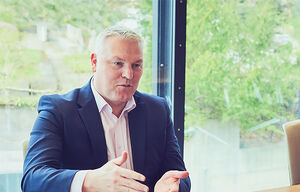Credit Suisse: Global Consumption Shifting Towards Emerging World
The rise of emerging consumers and emerging savers is carrying powerful implications for a range of consumer-exposed end markets as well as financial institutions.
The increase in consumer spending is more broad-based than in recent years, according to the Eighth Annual Credit Suisse Emerging Consumer Survey published at the 21st Credit Suisse Asian Investment Conference in Hong Kong this week. The three Emerging Asian countries surveyed – China, India and Indonesia – continue to hold the top 3 positions, with India remaining in first place, while China over took Indonesia to rank #2.
Poor income prospects and stagnant demographics in developed economies differ considerably from the emerging world explaining the shift of global consumption towards the emerging world. The consumption share of global GDP in mature economies has been declining since the turn of the millennium whereas in our emerging economies it has more than doubled from 11 percent to 23 percent.
More Active Lifestyle
The role of the younger, more affluent consumer is a key differentiation between the consumer story in emerging markets relative to the developed world. This is particularly true in case of China, where consumption patterns increasingly gravitate to a healthier, mobile and more active lifestyle.
The theme of e-commerce in emerging markets is strong with smartphones and mobile payment systems as key facilitators. Smartphone penetration in China is already above 80 percent among mobile using consumers. Annual mobile payments in China have already reached over $3,000 billion whereas in India they are expected to rise 5-fold to reach $1,000 billion by 2023.
Growth Drivers
- Total online retail spending across the surveyed economies are currently $1,300 trillion, however, current growth patterns suggest that it can increase to as much as $3,800 trillion if the surveyed economies mirror China's profile. Drivers that can help facilitate this growth include urbanization and greater use of data analytics.
The Survey involved nearly 14,000 face-to-face interviews.




















